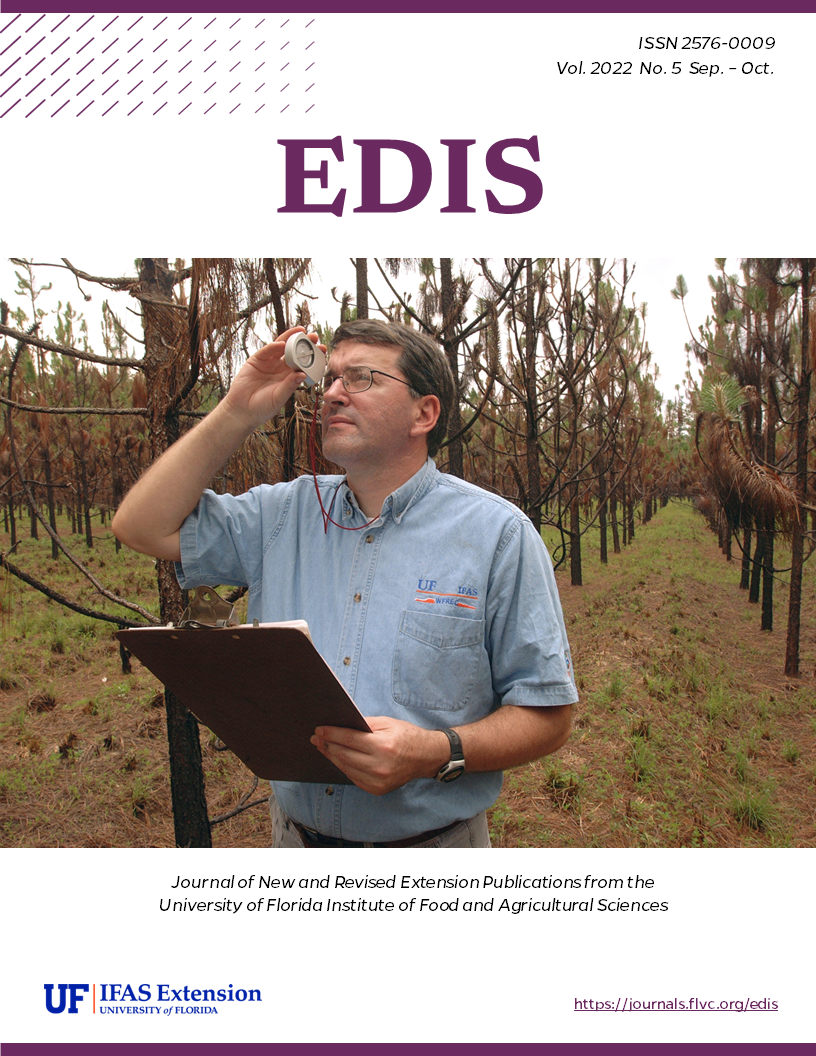Abstract
Horseweed has gained importance in recent years due to reports of the development of herbicide resistance to several modes of action, including glyphosate and paraquat. This new 5-page publication of the UF/IFAS Horticultural Sciences Department presents information about the lifecycle, identification, and management of horseweed in citrus groves. This publication is mainly intended for Florida citrus growers but will also be helpful for Extension agents, crop consultants, and others interested in citrus production. Written by Nirmal Timilsina, Sharpton Toussaint, Camille McAvoy and Ramdas Kanissery.
https://edis.ifas.ufl.edu/hs1451
References
Brown, S. M., and T. Whitwell. 1988. “Influence of Tillage on Horseweed, Conyza canadensis.” Weed Technology 2 (3): 269–270. https://doi.org/10.1017/S0890037X00030566
Dauer, J. T., D. A. Mortensen, and M. J. Vangessel. 2007. “Temporal and Spatial Dynamics of Long‐Distance Conyza canadensis Seed Dispersal.” Journal of Applied Ecology 44 (1): 105–114. https://doi.org/10.1111/j.1365-2664.2006.01256.x
Karlsson, L. M., and P. Milberg. 2007. “Comparing After‐Ripening Response and Germination Requirements of Conyza canadensis and C. bonariensis (Asteraceae) through Logistic Functions.” Weed Research 47 (5): 433–441. https://doi.org/10.1111/j.1365-3180.2007.00576.x
Latson, L. N., J. N. Jenkins, W. L. Parrott, and F. G. Maxwell. 1977. “Behavior of the Tarnished Plant Bug, Lygus lineolaris, on Cotton, Gossypium hirsutum L., and Horseweed, Erigeron canadensis [the Principal Wild Host Plant].” Technical Bulletin. Mississippi Agricultural and Forestry Experiment Station (USA). no. 85.
Moretti, M. L., L. M. Sosnoskie, A. Shrestha, S. D. Wright, K. J. Hembree, M. Jasieniuk, and B. D. Hanson. 2016. “Distribution of Conyza sp. in Orchards of California and Response to Glyphosate and Paraquat.” Weed Science 64 (2): 339–347. https://doi.org/10.1614/WS-D-15-00174.1
Shields, E. J., J. T. Dauer, M. J. VanGessel, and G. Neumann. 2006. “Horseweed (Conyza canadensis) Seed Collected in the Planetary Boundary Layer.” Weed Science 54 (6): 1063–1067. https://doi.org/10.1614/WS-06-097R1.1
Shrestha, A., K. Hembree, and S. Wright. 2008. “Biology and Management of Horseweed and Hairy Fleabane in California.” University of California, Agriculture and Natural Resources. https://doi.org/10.3733/ucanr.8314
Thebaud, C., A. C. Finzi, L. Affre, M. Debussche, and J. Escarre. 1996. “Assessing Why Two Introduced Conyza Differ in Their Ability to Invade Mediterranean Old Fields.” Ecology 77 (3): 791–804. https://doi.org/10.2307/2265502
Wistrom, C., and A. H. Purcell. 2005. “The Fate of Xylella fastidiosa in Vineyard Weeds and Other Alternate Hosts in California.” Plant Disease 89 (9): 994–999. https://doi.org/10.1094/PD-89-0994
Wu, H., S. Walker, M. J. Rollin, D. K. Y. Tan, G. Robinson, and J. Werth. 2007. “Germination, Persistence, and Emergence of Flaxleaf Fleabane (Conyza bonariensis [L.] Cronquist).” Weed Biology and Management 7 (3): 192–199. https://doi.org/10.1111/j.1445-6664.2007.00256.x


